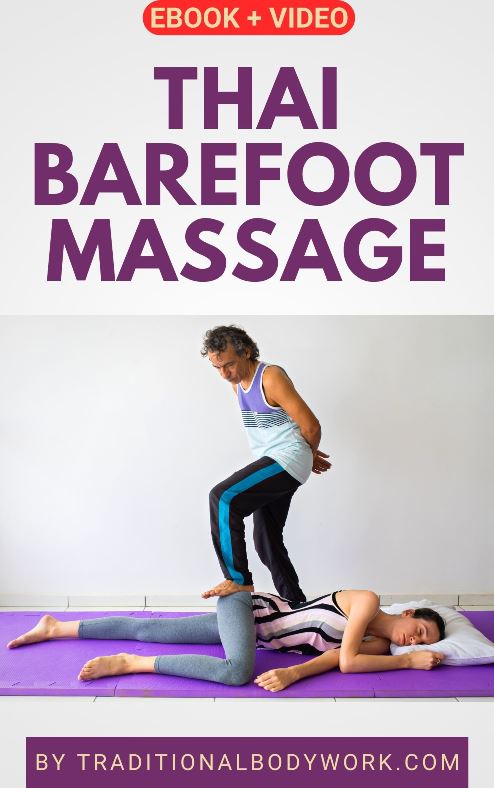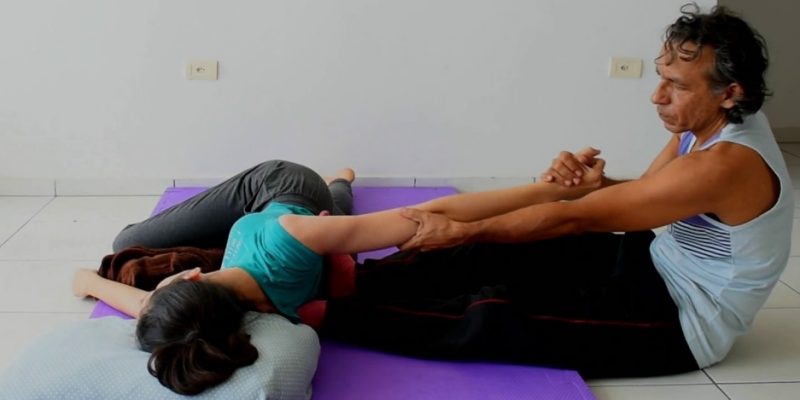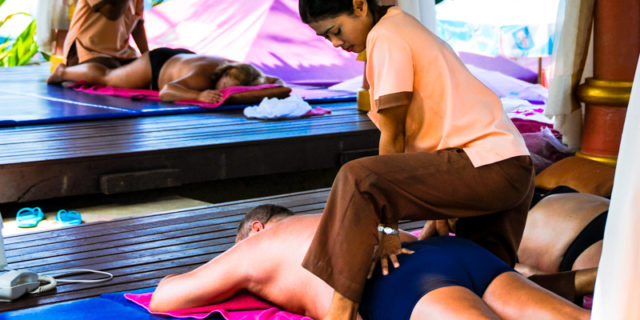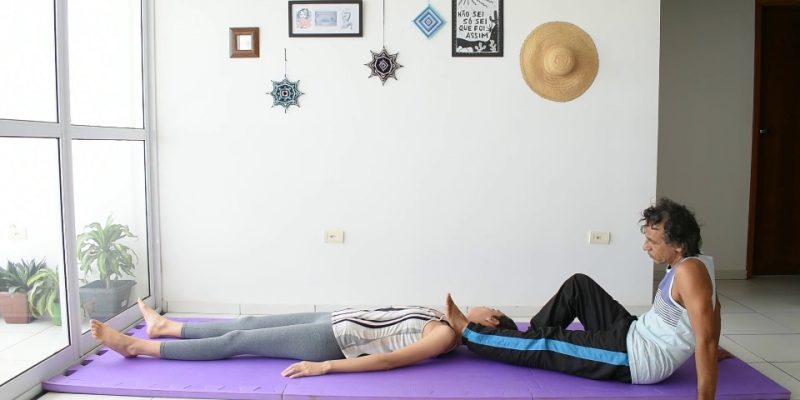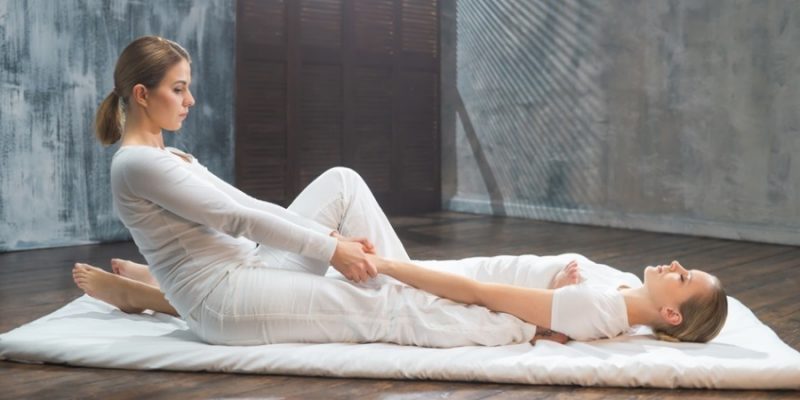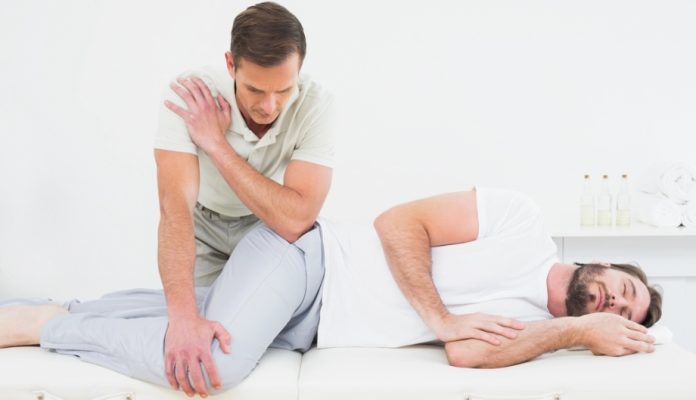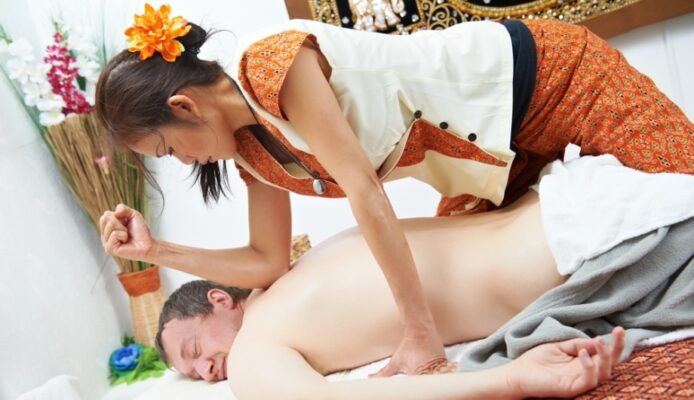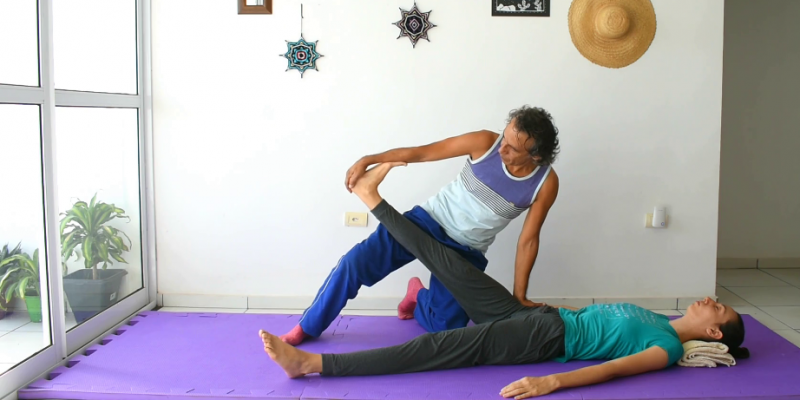
One of the things that makes Thai Massage so interesting for masseurs is that they can utilize a wide range of body parts to give a massage therapy session.
Think, for instance, of using the feet, knees, elbows, or forearms, apart from the more commonly used hands and fingers (the latter in Thai Massage often being the thumbs).

Using different parts of the body to massage a receiver may not only help to avoid repetitive strain and injury for certain body parts (typically the hands, fingers, and wrists tend to suffer), but it also means that the therapist can do much more for the client.
This “much more” doesn’t only involve the application of different techniques to do totally different things for/with a client, but also a means to moderate or control the amount and precision of pressure or acupressure one gives.
For instance, pressing on the lower back muscles with the fingers, palm of the hand, the elbow, toes, heel of the foot, or the knee each gives a very different feel (and result) for the receiver.
In general, one can give a lot of pressure with the feet (notably when standing) and with the knees, and less pressure with the hands and fingers. The elbows come a bit in between as for the amount of pressure. In any case, no matter what part of the body the masseur utilizes, it’s always important to give pressure through body weight rather than through muscle power.
Nevertheless, the fingers, such as the thumbs, are usually more precise than the elbows. The feet and knees perhaps lack even more “detailed precision.” Yet, with practice, one can usually become as accurate with the elbows as with the thumbs.
But, there are more differences; for example, the thumbs often have quite a “pointy” and “sharp” feeling, like the elbow (depending on which part of the elbow you use), but the hand palms, feet, or knees usually supply a much more evenly, widespread pressure, which can feel more comfortable for the receiver.

Nonetheless, the elbow can be used in quite a diverse way, that is, one can use the point i.e. tip of the elbow (called the olecranon), or rather the wider part attached to the forearm, or alternatively the wider part attached to the upper arm. Each of these sections amount for different ways and results of massaging with the elbow, and a different feel for the client.
Mind that therapists can use their elbows in a standing, kneeling, or sitting position, or while leaning over a receiver. Moreover, one can actually even give a complete full body Thai Massage — head to toes — by only using the elbows.
As for the position of the client to work on, well, that can be any of the seated, prone, supine, or side-lying position.
In any case, my personal experience is that working with the elbows is quite relaxing for the therapist, basically much more pleasant for the masseur’s body than using the hand palms or fingers. As such, I regularly use my elbows during a massage therapy session, apart from plenty utilizing my knees and feet.






